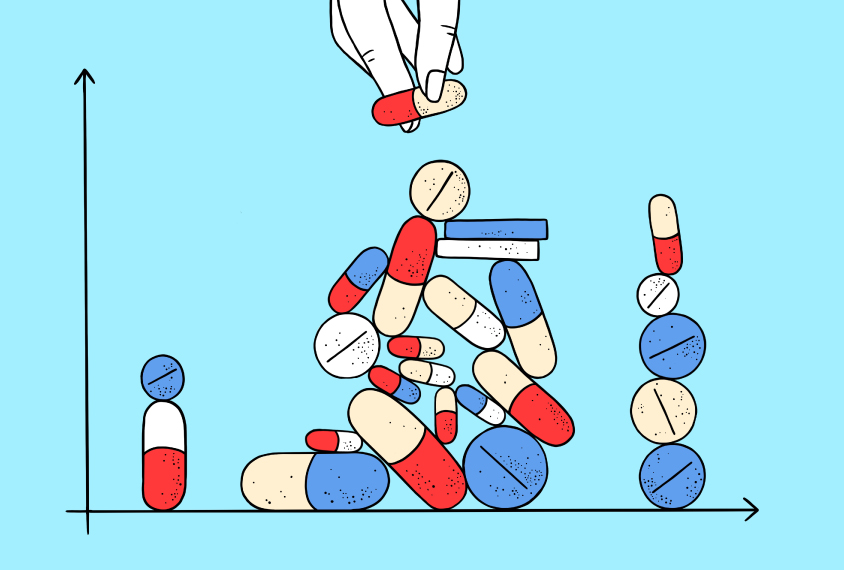Welcome to the July issue of Going on Trial, a monthly newsletter covering clinical trials and drug development for autism and related conditions. This month, we dig into a cell culture model that could reduce the frequency of failed drug trials, and we review early results from an antisense oligonucleotide treatment for Dravet syndrome.
Lost in translation:
Roughly 90 percent of candidate drugs share the same problem: They appear promising in cell culture and animal studies, only to prove ineffective or unsafe in people.
A cell culture model called an organ-on-a-chip, or tissue chip, could help smooth the transition by weeding out toxic or other problematic drug candidates before they’re tested in people. Last month, researchers met at the Microphysiological Systems World Summit in Berlin, Germany, to discuss plans to shepherd the chip models into the drug development process.
The models involve culturing human cells in a device containing microfluidic channels that emulate the flow of blood or air through an intact tissue or organ. For example, one blood-brain-barrier-on-a-chip contains two stacked chambers, separated by a thin porous membrane; astrocytes and pericytes grow in the base layer, and gatekeeping endothelial cells grow in the upper compartment. The device pumps fluid through tiny channels atop the endothelial cells to provide them with fresh oxygen and induce mechanical stress, similar to the environment of a real blood-brain barrier.
Scientists have created a menagerie of tissue-chip models — mimicking the liver, lungs, heart and neuromuscular junction — but the blood-brain-barrier model may prove particularly useful for drug screening, says YongTae Kim, associate professor of mechanical engineering at the Georgia Institute of Technology in Atlanta and chief executive officer of MEPSGEN, a company that develops and sells tissue-chip models.
Animal models cannot accurately predict blood-brain-barrier penetration because the barriers are species-specific, Kim says. “So even though we test with animals, that doesn’t guarantee that you’re going to get the same performance in terms of brain penetration in humans.”
C
urrently, drug developers can submit data from tissue-chip models as part of their investigational new drug application. But they must also go through the “burden of proof” and submit data showing the model is biologically relevant and valid, says Danilo Tagle, director of the Office of Special Initiatives at the National Center for Advancing Translational Sciences (NCATS).To help streamline the models’ use in drug development, NCATS is reviewing grant applications for centers dedicated to validating tissue-chip models for the Food and Drug Administration (FDA). Such validation would enable researchers to use the models in drug trials without having to prove their effectiveness every time. The agency plans to announce the recipients by January and fund them for five years, with the goal of each center submitting one chip application to the FDA per year, Tagle says.
If tissue chips become an accessible and accepted tool, they could reduce the proportion of withdrawn drugs and also grant a second act to those that have already been withdrawn. There are about 3,000 drugs that completed phase 1/2 safety trials but were later withdrawn because of toxicity or lack of efficacy, Tagle says. Companies could take these drugs off the shelf and use a tissue-chip model to test their efficacy for a different indication.
The organ-on-a-chip model is “resurrecting a number of these compounds that already have benefited from substantial investment from pharma,” he says. “It’s giving second life to some of these compounds.”
Drug samples:
- An antisense oligonucleotide treatment for Dravet syndrome reduces seizures and improves cognition in children and teenagers ages 2 to 18, according to early results from three trials, shared by Stoke Therapeutics on 25 July. The treatment, STK-001, was generally well tolerated for one to three doses of 10 to 70 mg each. No participants withdrew from the trial because of drug effects but one-third of participants experienced an adverse event, such as vomiting or irritability. The trials are expected to finish data collection by the end of the year.
- The antipsychotic drug cariprazine, used to treat schizophrenia and bipolar disorder, is generally well tolerated in children and teenagers with autism, according to results from an open-label phase 1 trial. The most common adverse events were weight gain, increased appetite, dizziness, agitation and nasal congestion. A phase 3 trial of the drug as a treatment for irritability in autistic children and teenagers is underway.
- The Australian company Neurotech secured approval for an open-label phase 1/2 trial of their drug NTI164 for girls and women with Rett syndrome. The drug, a cannabis derivative with low levels of the psychoactive compound tetrahydrocannabinol (THC), has previously been tested in a phase 1/2 trial for children and teenagers with autism.
- More cannabis clearances: The Israeli company SciSparc received approval for a clinical trial of their cannabidiol (CBD) oil SCI-210 in children with autism on 14 July.
- Italian pharmaceutical company Iama Therapeutics announced plans for a phase 1 trial of NKCC1 blockers for the treatment of seizures in epilepsy and neurodevelopmental conditions, Rett Syndrome News reported. NKCC1 is a protein involved in transporting chloride ions into GABA neurons, which is necessary for them to fire; blocking the protein could help rein in excitability and therefore reduce seizures. The trial is set to take place in collaboration with the Sapienza University of Rome in Italy.
- Acadia Pharmaceuticals bought the exclusive global distribution rights to the Rett syndrome drug trofinetide from Neuren Pharmaceuticals for $100 million, according to a 13 July press release. The purchase also includes the global rights to NNZ-2591, Neuren’s candidate drug for the treatment of Rett and fragile X syndromes. Trofinetide, branded as Daybue, has brought in more than $21 million in sales since it was approved by the FDA in March.
That’s all for July! Make sure you subscribe so you can receive this newsletter in your inbox every month, and feel free to get in touch with feedback or story ideas: [email protected]





